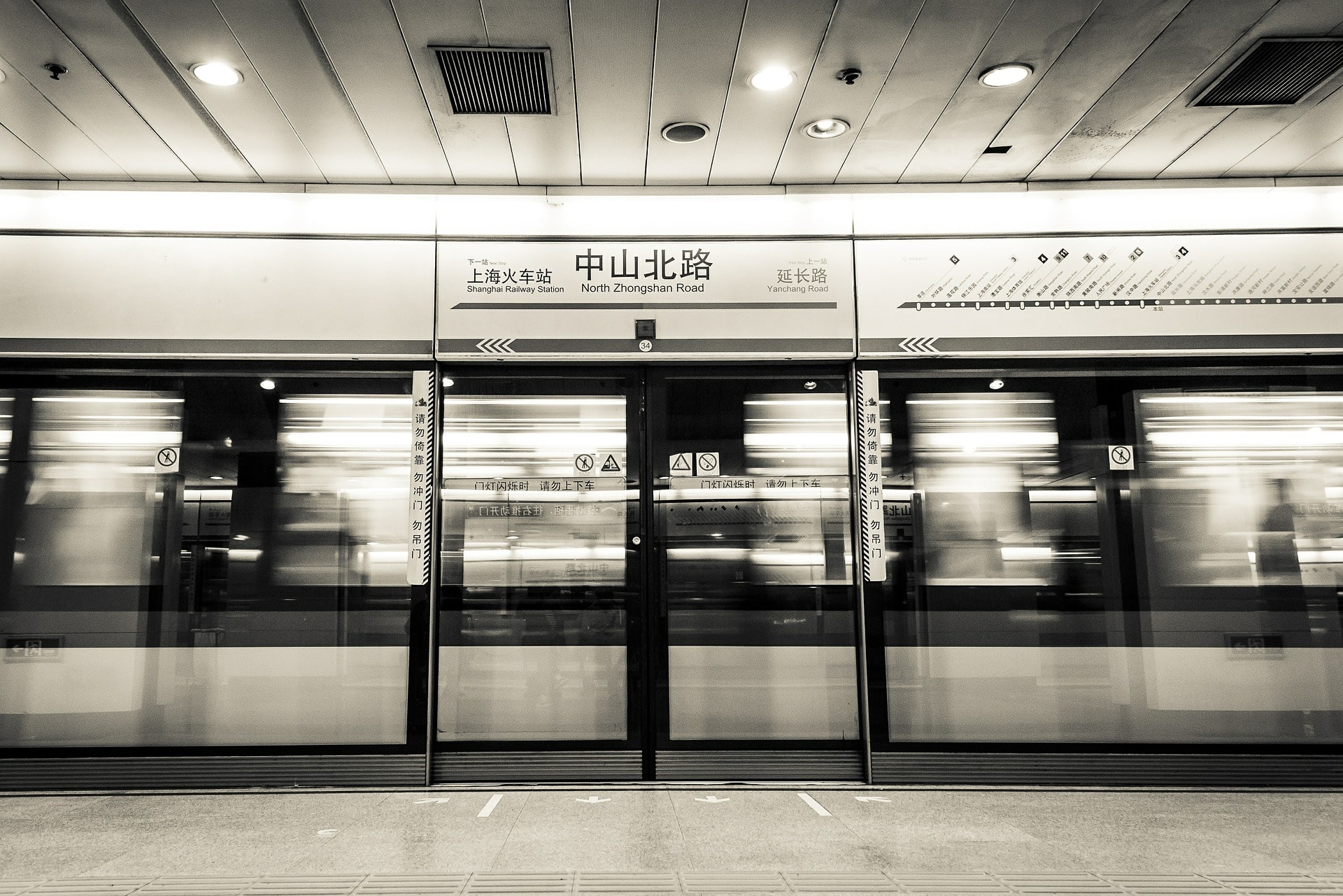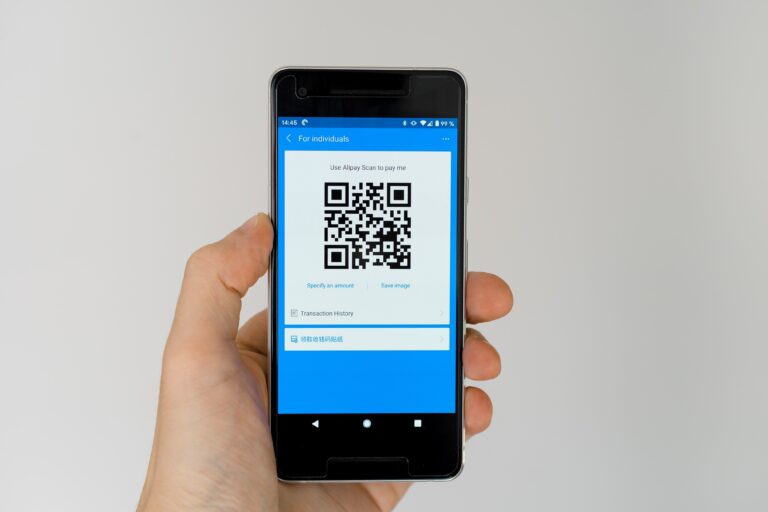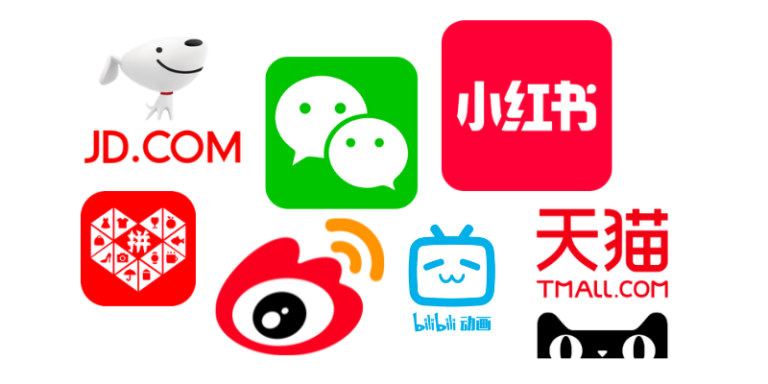Metro systems worldwide are beset by advertisements, and China is an exception, with some of the largest metro systems in the world. Daxue Consulting deciphered the strategy to advertise in the Chinese metro, including positioning, targeting, advantages, innovations, everything you need to know!
Tips for one of the most active advertising methods in China: Metro ads
A metro network that welcomes millions of people every day
In China, several big cities have developed major metro networks and transport millions of people every day. Among the ten busiest metro networks in the world, four are Chinese.
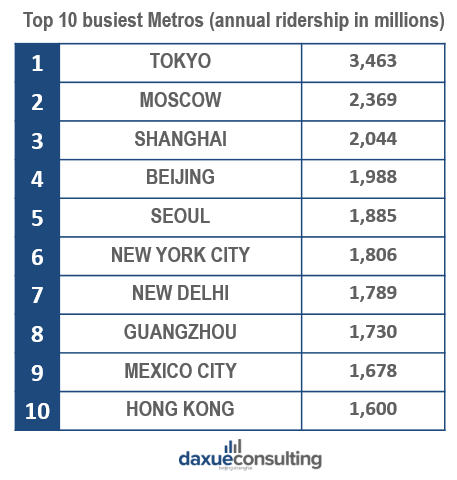
In 2017, more than 12 billion people took the metro in six major cities in China.
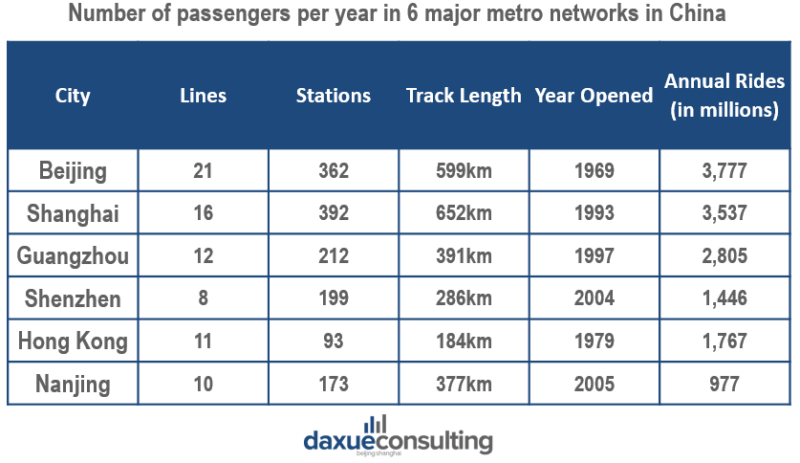
This is a golden opportunity for advertisers, and one brand in particular that has seized this opportunity is the French brand JC Decaux. Indeed JC-Decaux is somewhat well established in China and covers nearly 100% of the metro lines in Beijing, Shanghai, Tianjin, Nanjing, and Hong Kong. It also has a strong presence in Canton and Chongqing. China has become the Group’s leading market in 2017. In 2017, JCDecaux, the world leader in street furniture, saw China become the group’s leading market, contributing 20% of its revenue (€3.47 billion in total). The American brand Clear Channel is also well established in China through its subsidiary Clear Media and is JC Decaux’s number one competitor.
Strategic locations and new formats for brands in the Chinese Metro
Four main advertising places
Daxue Consulting conducted an observational study in the Shanghai metro and counted four central advertising placement locations in the Chinese metro.
Inside the subway car
A metro train is a strategic place because people will be exposed to the advertisement for a long time. Thus, the brands are fighting to get access to this location. There may be traditional posters on the windows, advertising on the handles or classic screens. It can be powerful because ads are at eye level and close to people.
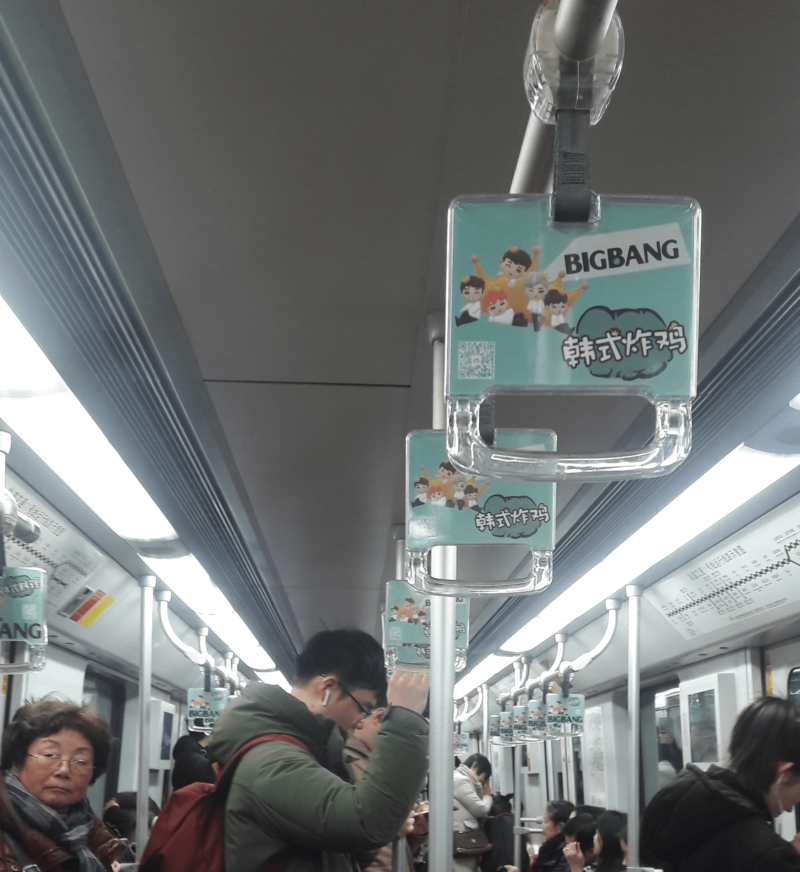 | 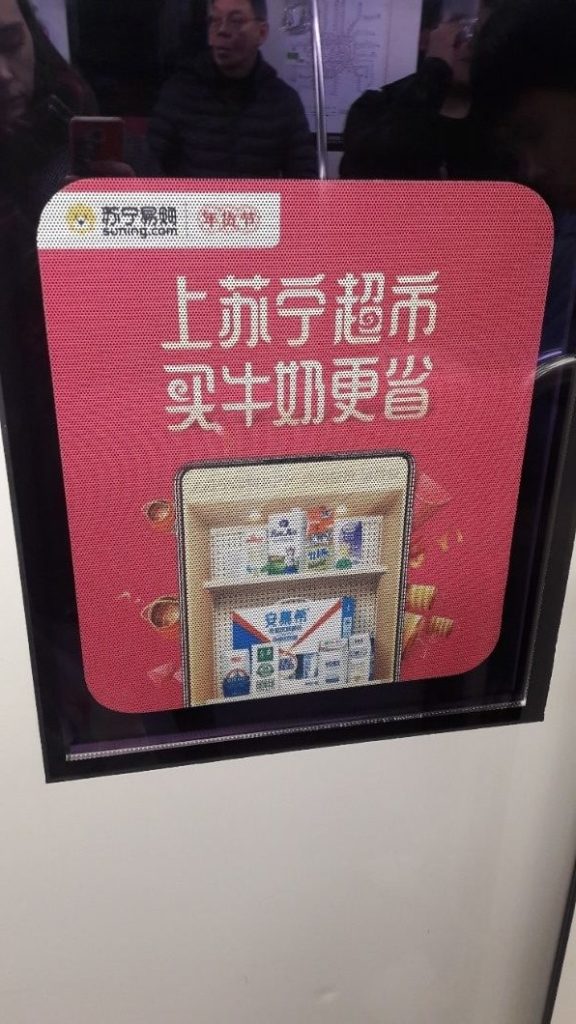 |
Train wrapping
For certain types of trains, such as those that travel above ground and can be seen from outside, in the city, wrapping is a good option. The train itself has become the advertising medium. This extends the brand’s coverage to those who get on the subway, and pedestrians outside.
Inside the metro station
A metro station is a common place for advertising. There are many advertising spots inside a subway station in China. Static posters, digital banners, food vending machines, consumers are in high demand. This allows you to extend your advertisement and make a sort of mini-series so that your brand appears at each step of the journey. You can find there light box advertising or subway TV advertising. Bright posters or screens make it easier to attract the attention of passers-by.
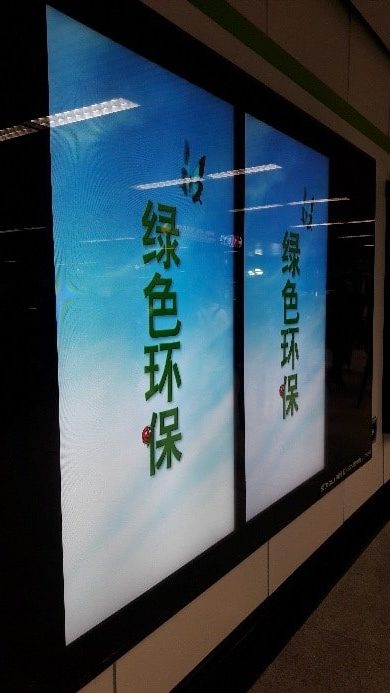 | 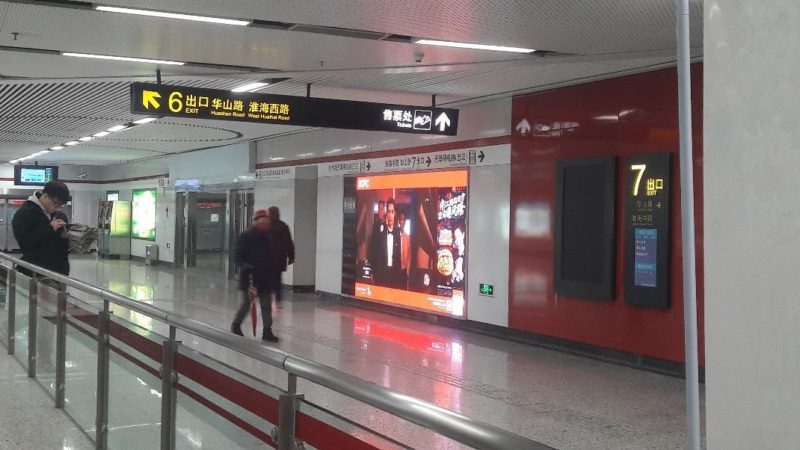 |
Another strategic location inside the metro station is the advertising screen just in front of the metro, which informs passengers about the waiting time for the next train. This screen is key as passengers glance at it to look for information. You are therefore assured that many potential customers will catch a glimpse of your ad when they check the train times.
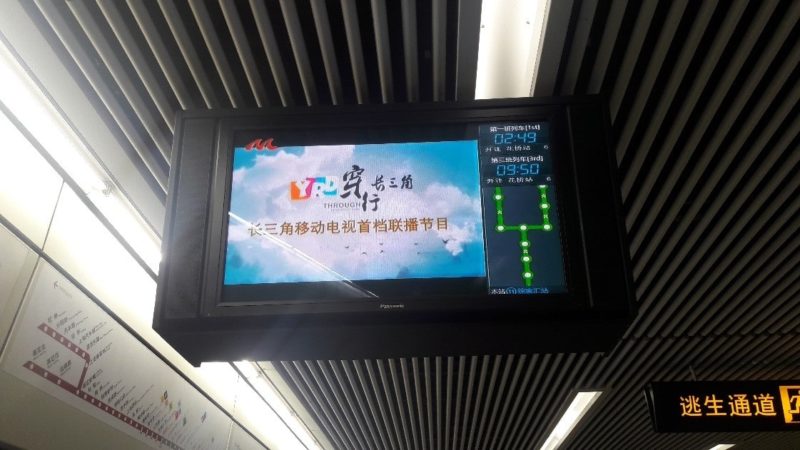
Inside the tunnel
This location may surprise because it is not very common in the West, but in China, the metro tunnel is the medium for many advertisements. For example, when people are waiting for the subway, the subway tunnel is empty, but lit by ads.
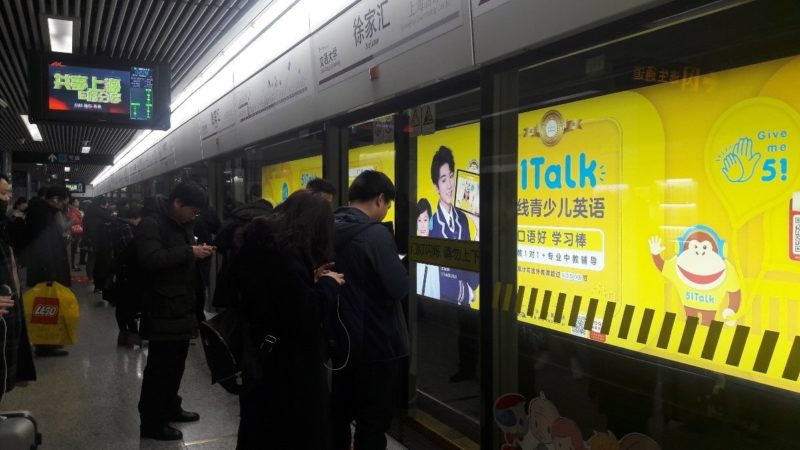
Or, when you’re in the subway, and it is moving at full speed, you can also see video ads scrolling through the tunnel created a stop-motion animation effect. This is called the zoetrope technique.
Zoom on Zoetrope (Advertisement system in the subway tunnel)
Another advertising format can be seen in China: zoetrope. This system often surprises tourists and expatriates because it is rarely used in the West. The technology comes from companies such as Beijing Jinri Group, Canada’s SideTrack or New York-based Submedia.
It is a digital imaging system installed in metro tunnels. LED screens are placed one by one on a long panel that extends from the beginning to the end of the tunnel. The ads are on these bright screens, but they are not videos, only individual images.
These images are illuminated as they pass through the subway and people in the subway; who move quickly, can see a series of moving images in the windows. When you are inside the train, and you see these images light up one by one, it looks like a video: a real 15-second commercial message.
[Advertisement in the metro tunnel in Shanghai – Credit: Daxue Consulting]
It is effective because if done right, can be a form of entertainment, and by playing on the light effects, you can create an attention-grabbing spectacle. Indeed, the screens are often equipped with New Technologies such as SMD LEDs to get a much brighter and more intense communication, as a result, it is more eye-catching than traditional ads.
The impact of lighting on mood and mindset has been well documented and has been used very effectively to change consumer buying behavior in stores for instance. We now know that it is a critical aspect of communication that influences the subconscious perception of things. That is why such an advertising format is exciting for the metro; it creates contrast.
This technology requires that trains pass the ads going at least 25 miles per hour. If they are going slower, then the ads will not light up in the tunnel.
Screen’s ubiquity enables flexibility
In China, advertising screens in public places such as public transport, restaurants, elevators, shopping malls, and sports halls have become the best advertising medium. Screens are even present in taxis in large cities, on the backrests of seats. And this ‘reign of screens’ in China offers certain flexibility to brands:
- First, screens free you from the creative limits of the static image. Artistic creation can become interactive: advertisements are now able to use eye-catching techniques and adapt more easily to the target in front of it. For some locations, creative people can even take over space by using a combination of different screens for the same audience in the same place for example.
- They can easily be updated compared to a traditional billboard
- In the subway, they can be used for a variety of purposes: transmitting information as digital signage, creating entertainment as video or interacting with the consumer by adding sound.
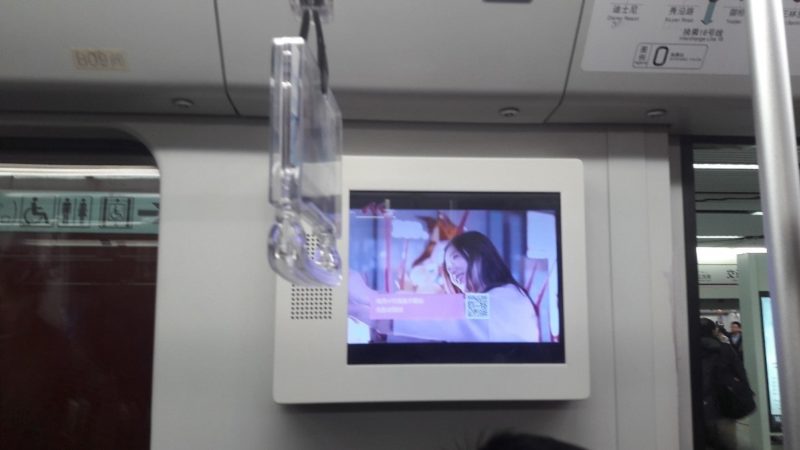
Subway ads: an effective advertising medium to easily reach thousands of Chinese consumers
Easy targeting
If advertising in the metro has been so appreciated by advertisers in recent years, it is mainly because it allows excellent targeting. One might think that OOH (out of home) display encounters targeting problems compared to digital advertising. However, thanks to the explosion of offline data, targeting is also effective outdoors. The data will, therefore, be used at each step of the posting process in the metro. Thus, from the very beginning of their ad campaign, brands integrate all locations and audience data directly into their content. Behavioral, demographic and movement data analysis can be used to target the audience more accurately.
First, choosing the right metro line is essential
In Shanghai, for example, each line has its specificity. Some lines are known to carry a large number of people per day, such as lines 1 and 2, which carry 1.250,000 and 1.200,000 passengers per day respectively. If you want high immediate visibility and less precise targeting, a busy line might be your answer.
Then, you must also choose the right metro stations based on pedestrian traffic and location within the city itself
Subway advertising is very convenient for local ad: if your goal is to bring people to your company, advertising in the nearest subway station is significant.
Using Shanghai as an example, the People’s Square (人民广场) or East Nanjing Road (南京东路) stations can be relevant if your marketing strategy is to increase your store foot traffic because many shopping malls and boutiques are located there.
The Xujiahui metro station (徐家汇) can also be a strategic placement if you are addressing a target audience of expatriates or foreigners in Shanghai because it is located in the heart of the former French concession.
Tongji Daxue (同济大学) or Jiatong Daxue (交通大学) stations close to universities and are therefore consistent if your metro ad targets young people, students or teachers.
Finally, choose the right time: which day and time
Your subway ad will be seen by different target audiences, especially according to the time of day. During the week and at weekends the travelers are not the same. Choosing to display your ad on a Sunday will not have the same impact as on a Monday for instance. Choose the peak hours (7:30-9:30 AM & 5:30-7:30 PM) for a big impact.
For example, the picture below shows a cartoon-like advertisement that was broadcast on Shanghai’s metro line 11 on a Sunday in the early afternoon. An excellent time and place to reach children or families.
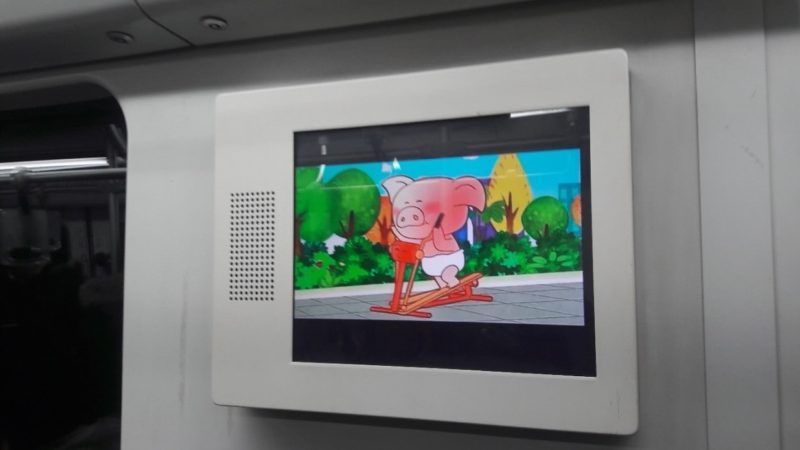
A high recall rate

What is particularly appealing about subway advertising is the good recall rate it offers. This is logical: passengers travel by metro every day, often at the same time and perhaps even on the same train. This allows them to see your ad every day and more visits can increase the effectiveness of the ad over time. In most cases, the increase in the number of views makes advertising more effective. So the repetition effect offered by the display in the metro is a significant benefit.
In addition, the distance between the advertisement and the consumer is ideal. It is also for this reason that the recall rate is better: advertisements are at the consumer eye level and can be placed on objects they touch, such as handles.
Moreover, although subway passengers surrounded by other passengers, watching ads becomes more comfortable than taking a sneak peek at other passengers. As a result, all subway campaigns are high visibility campaigns.
Ads in the Chinese metro: a ‘Wait Marketing’ strategy
Wait Marketing: Communicate at the right moment at the right place
Wait Marketing is a marketing strategy that involves interacting with consumers when they are available and responsive because they expect something. This can be, for example, in a waiting room, a post office, a bus stop or a metro station.
According to Diana Derval, who coined the term Wait Marketing, it comes down to ‘Communicate at the right moment at the right place’. Thus, communicating at the right time, in addition to being effective, would characterize the action of advertisers concerned with respecting the consumer. These favorable opportunities are consumers’ waiting times, insofar as they are in a helpful context for establishing communication. Advertising does not bother passengers (or less) than in other contexts.
« Each medium is effective, as long as it is delivered at the right time: when consumers are receptive, which is the case when they’re waiting. »
Diana Derval, inventor of Wait Marketing and president and Research Director of DervalResearch
And this is exactly the strategy that is being implemented in the metro in China. This could be called ‘Simple Wait Marketing’ because the metro ads are placed to ensure that as many people as possible see them, but nothing is forced. For example, when a Chinese person enters the subway, he can either pay attention to the ads around him/her or play on a phone, or read a book. Thus, the video ads, flyers, and posters that can be seen in the metro are part of Wait Marketing.
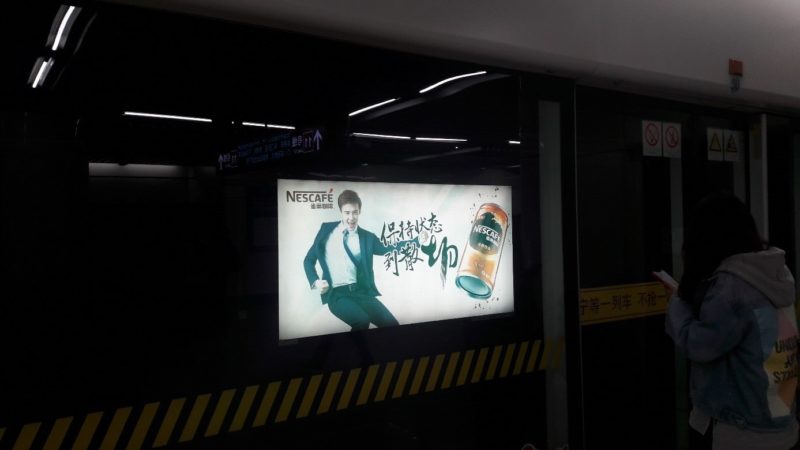
This tactic is also often used in queues in China.
However, today we can think that the more and more systematic use of smartphones while waiting actively reduces the potential of Wait Marketing.
Turning advertisement into entertainment
Thus, depending on the situation, the product, and the target audience, there are different ways for brands to work with Wait Marketing. By reducing, transforming or valuing it.
Despite this, today we dislike waiting: whether it is a question of traveling, accessing information, everything must be fast and instantaneous. And that is where the big challenge for brands comes in: they have to turn these horrible moments of waiting into more enjoyable moments. One solution is therefore to offer entertaining content. This is an advertising trend that has been widely followed by advertisers for several years. The idea is to give the consumer the opportunity to have fun or to entertain.
And we know that “in waiting times consumers have quite an exceptional memory coefficient, often exceeding 50% (compared to 15% the rest of the time)”. So if an ad offers entertaining content, then the recall rate can become very high.
The issue is no longer to ask « What waiting times can I eliminate in my user journey? » but rather « What unoccupied waiting times can I convert into occupied wait times? »
An Offline-to-Online strategy: The QR Codes in China
Impulse buying: How do QR Codes work?
Impulse buying has always been a hot topic for retail. Thanks to new phones’ features and changing customers’ habits, impulse purchases are no longer limited to stores. In China, on-the-go shopping has become a habit thanks to the evolution of phone payment platforms. The act of buying has become quick and easy so as not to discourage consumers. And this need is met by technologies such as QR codes. They offer the possibility of adding products to a virtual shopping cart in a few seconds.
In China, QR Codes are everywhere: in coffee shops, supermarkets, restaurants, florists, for entering the subway, even street musicians have a QR Code to collect money. Scanning the QR Code with your phone has become a natural and essential step for Chinese brands and consumers.
The ultimate goal: Sales conversion
Indeed, the QR code can be considered a hypertext link on a poster that links the physical world to the online world. For marketers, QR codes allow advertisements to direct users to mobile landing pages that contain much more information and interactivity than is available on the poster. Very often, QR Codes in China direct users to the brand’s Wechat page.
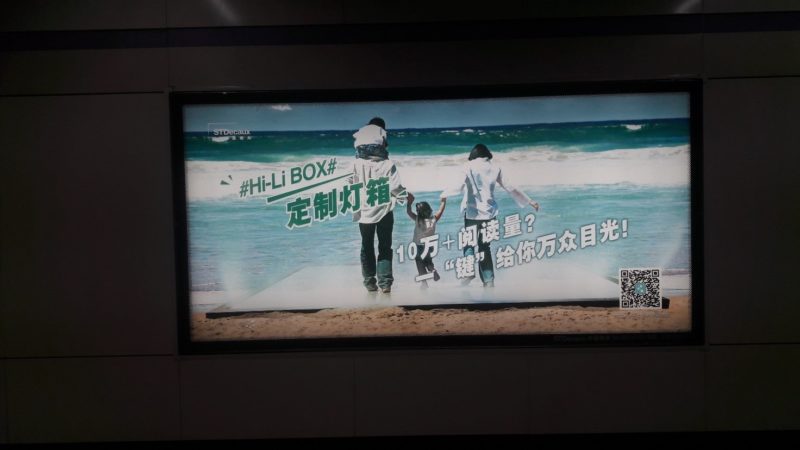
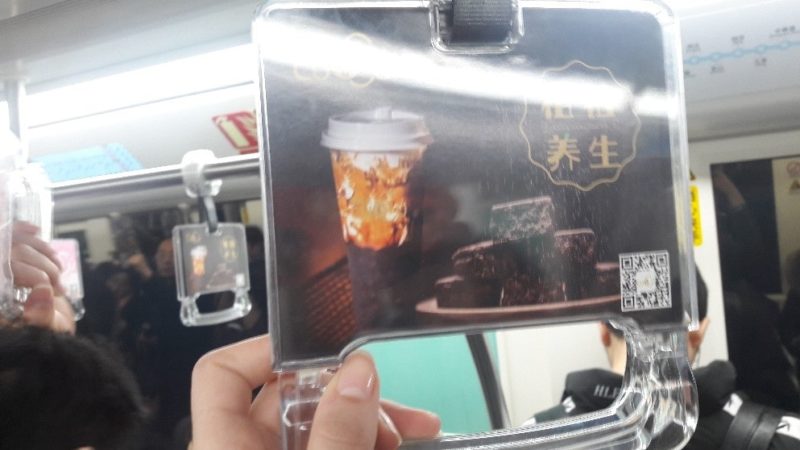
This integration between print and web via mobile has revolutionized the customer journey in China. Converting leads into sales has become more comfortable. This is called O2O (Offline-to-Online) marketing to engage consumers. In the Chinese subway, all advertisements have a QR Code. Scanning them can allow the customers to obtain discounts for example.
Many other benefits of using QR Codes in China
Finally, QR Codes offer brands a whole range of possibilities, whether there are in the metro or not:
- Comfortable and close to Chinese consumption habits: in the West, consumers need to download a particular application to be able to scan QR Codes. This is the first However, in China, Wechat offers a QR code scanning functionality, so it is part of their daily lives.
- Convenient: This method bypasses any language barrier between Chinese and English. Chinese people have adopted the routine of scanning QR codes when they need more information. therefore, more natural for them to scan a QR code directly rather than copy a URL in Pinyin or English.
- Seamless: the QR Codes in China allow a seamless journey within the customer journey. This is only a one-step process to redirect users to a new page.
- Measurable: the actions carried out via the QR Codes can easily be tracked with traditional statistical tools and therefore make it possible to measure the ROI of a communication campaign easily.
- Cheap: having and adding a QR Code to an advertising poster doesn’t cost much and is an effective way to gain traffic.
- Easily adaptable to all media: your QR Code becomes your signature, you can put it on all your communications easily.
Thus, the number of passengers, the diversity of people, the favorable context of the waiting time and the new advertising formats are today as many assets as the Chinese subway has. Global brands and Chinese brands are therefore fighting to obtain the best advertising medium in the Chinese metro.
Author: Steffi Noël
Daxue Consulting can help you implement your advertising strategy on the Chinese market through consumer research or market research for your brand. If you want to discuss the prospects of your advertising strategy in China, contact our team directly. Our project managers will work closely with your team to explain the different approaches in detail and collaboratively decide on which strategy suits you and your business the best in China.


